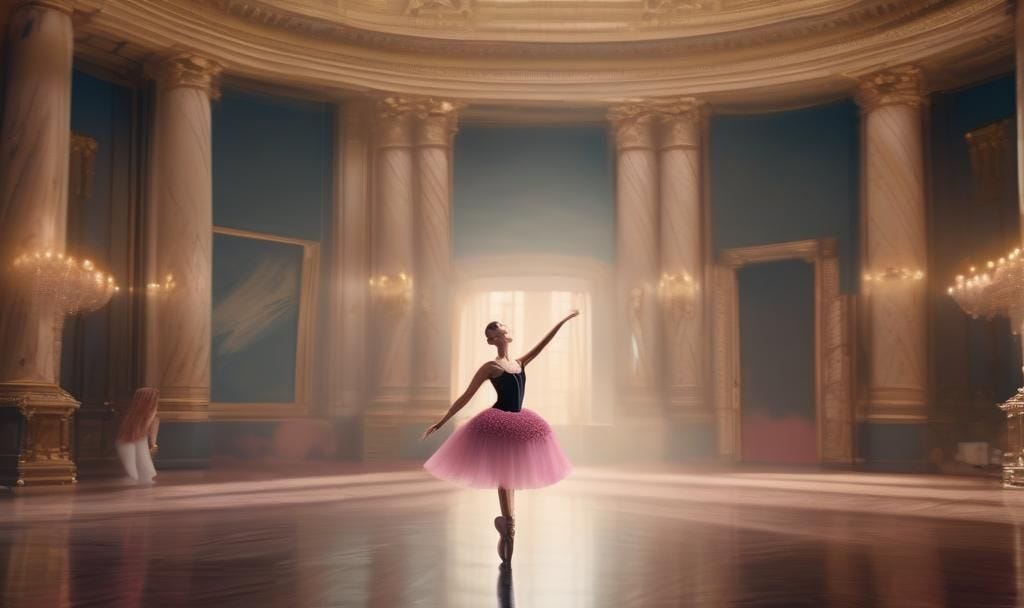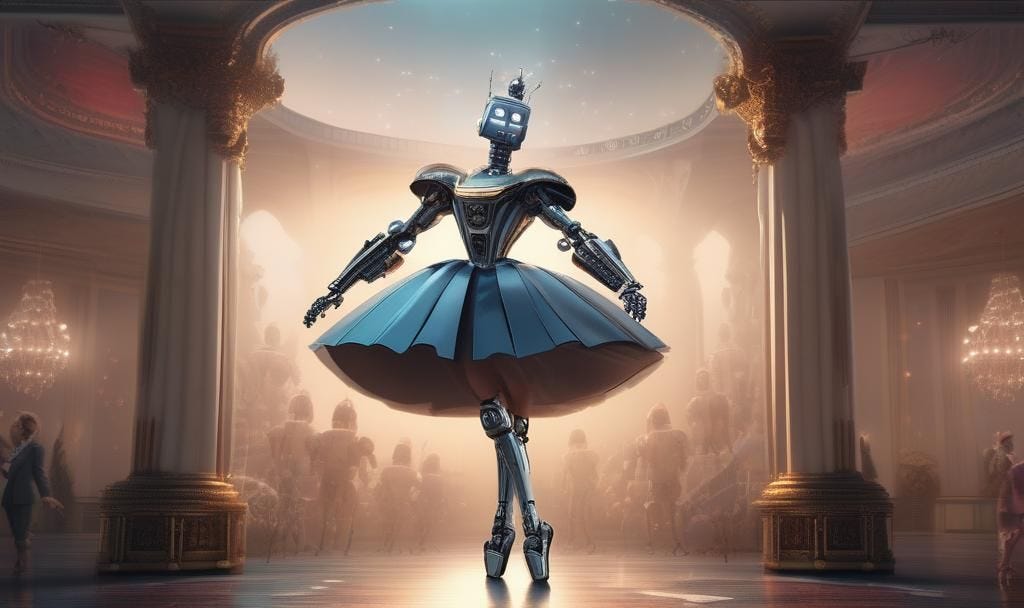Human Imagination in an Artificial World
What a children's book can teach us about using AI as an adult
As a child, I had quite the active imagination.
From spending hours in the backyard running in circles with a bucket on my head, to talking my little brother into wearing a tutu for an interpretive rendition of Swan Lake, to claiming I would be the first pop-star ballerina president when I grew up (still not out of the question), imagination was a defining value of my childhood.
Flash forward to today, and I would still say that imagination is a defining value of my (very adult) career in AI.
Imagination is the ability to create new ideas and concepts out of old knowledge and experiences. Which means that imagination lies at the heart to all innovation, as without it we would simply be stuck in a world of iterations.
This also means that imagination is a value essential to pushing the boundaries of AI and exploring the possibilities that these tools hold.
However, despite imagination being indispensable to AI development, lately I’ve found a growing sense of hopelessness when it comes to the future of human imagination in an increasingly artificially generated world.
Instead of engaging with AI to explore new horizons of our own human imagination, we have been left questioning if there even is a future for our ingenuity.
Well, as your future pop-star ballerina president, I feel it’s time to clear some things up on the role of AI in our world of imagination.
TL;DR - Human imagination is what powers creativity in AI. Check out Luna and the Magic AI Paintbrush for a story that brings this to life.
Speaking of childhood, they say you don’t truly understand something until you can explain it to a child.
No matter how complex the subject, or how deep your expertise, the true test of your knowledge is being able to translate that complexity into simple explanations even a child can understand.
So, with this sentiment in mind, I want to dive into the vastly complex subjects of imagination and AI using the very simple medium of a children’s’ book.
An AI Made Simple Book
Earlier this month I had the opportunity to meet Bessie Schenk and Rob van der Veer at the World AI Summit in Amsterdam, the co-authors of the children’s book Luna and the Magic AI Paintbrush.
It wasn’t just Bessie and Rob’s passion for their work that caught my eye. Over a cup of coffee and quick skim of the book, we discussed the fundamental concepts of imagination and AI that the co-authors had imbued in their children’s book - and I immediately thought of all the adults that would benefit from reading it.
Luna is a story about understanding how AI works through the experiences of a creative young artist. In this book, we meet a little girl who discovers that when working together with an AI paintbrush she can create great art - but only by combining her imagination with the brush’s technical ability.
So, what lessons can we learn from Luna?
The Power of Contextualizing Creativity
In the story, Luna asks the AI paintbrush to paint her a ‘robot tea party in a galactic space jungle on a floating island with a horse that’s lying down and an ice cream cone’.
The paintbrush does just that. The only problem is it paints the horse upside down on its back, which is not what Luna had meant by lying down.
Even when something seems straightforward and simple, AI can still make unexpected mistakes. The AI paintbrush in the story interpreted “lying down” from a different frame of reference than what Luna had intended, even though ‘horse lying down’ had seemed like an easy instruction.
While AI can only work from the set of references it has been given, humans have the ability to create using multiple frames of reference simultaneously.
In this case, even though Luna was using her imagination to create a picture far from factual, she was still able to contextualize her creativity where she needed to by picturing how a horse realistically lies down. AI, on the other hand, did not have the capacity to contextualize the creativity, resulting in an upside down horse. In this instance, having the factual reference point for how horses lie down was essential to the desired outcome.
The ability to move between multiple frames of reference and contextualize creativity adds depth to the human imagination that can be supported, but never replaced, by AI.
The Limitations of Retrospective Generation
At one point, Luna asks the AI paintbrush how it was trained to paint. The AI paintbrush explains that it was shown thousands of pictures of different things, and that it uses this knowledge base to generate images. When Luna asks if it creates ideas from its own thoughts, the AI paintbrush responds:
“Nope. I just try something based on what I’ve seen before.”
AI can only create based on previous examples it has been shown. This is something I like to call retrospective generation, or the process of generating content by referencing past examples, ideas and concepts. Although it may seem at times like AI is creating something new, in reality it is limited by the previous information it has been trained on.
Humans, on the other hand, do not have this limitation. Yes, we can draw on previous experiences and examples to help shape our creativity, but we are not bound by them. Instead, we have the ability to imagine beyond what we have already experienced, enabling us to create even in instances in which we have no previous reference point.
So, when it comes to using AI, we humans can use the tool to understand what has previously been imagined - and then use this as the starting point to our own prospective imagination.
The Real Magic of AI
All this leads us the third lesson, and morale of the story. Although the book is called Luna and the magic AI paintbrush, the magic in the end comes from Luna, not the paintbrush.
After many iterations of Luna instructing the AI paintbrush on what image she wants, Luna finally takes the AI paintbrush in her own hands and guides it to create the masterpiece she had been imagining from the start. In the end, it was Luna’s imagination supported by the painting abilities of the AI that led to a work of creative art.
It is in understanding that the magic of imagination will always come from the human, and using this knowledge to integrate AI as an augmentation tool into our workflows, that we will truly be able to perform at our best.
AI does not replace our imagination. Our imagination is exactly what brings the power of AI to life.
Say hello to the humans
Bessie Schenk; Co-author, publisher, and Global strategic marketing
Rob van der Veer; Co-author, pioneer and veteran in AI, security, and software engineering
Mireille van Yperen; Illustrator, graphic and website designer









